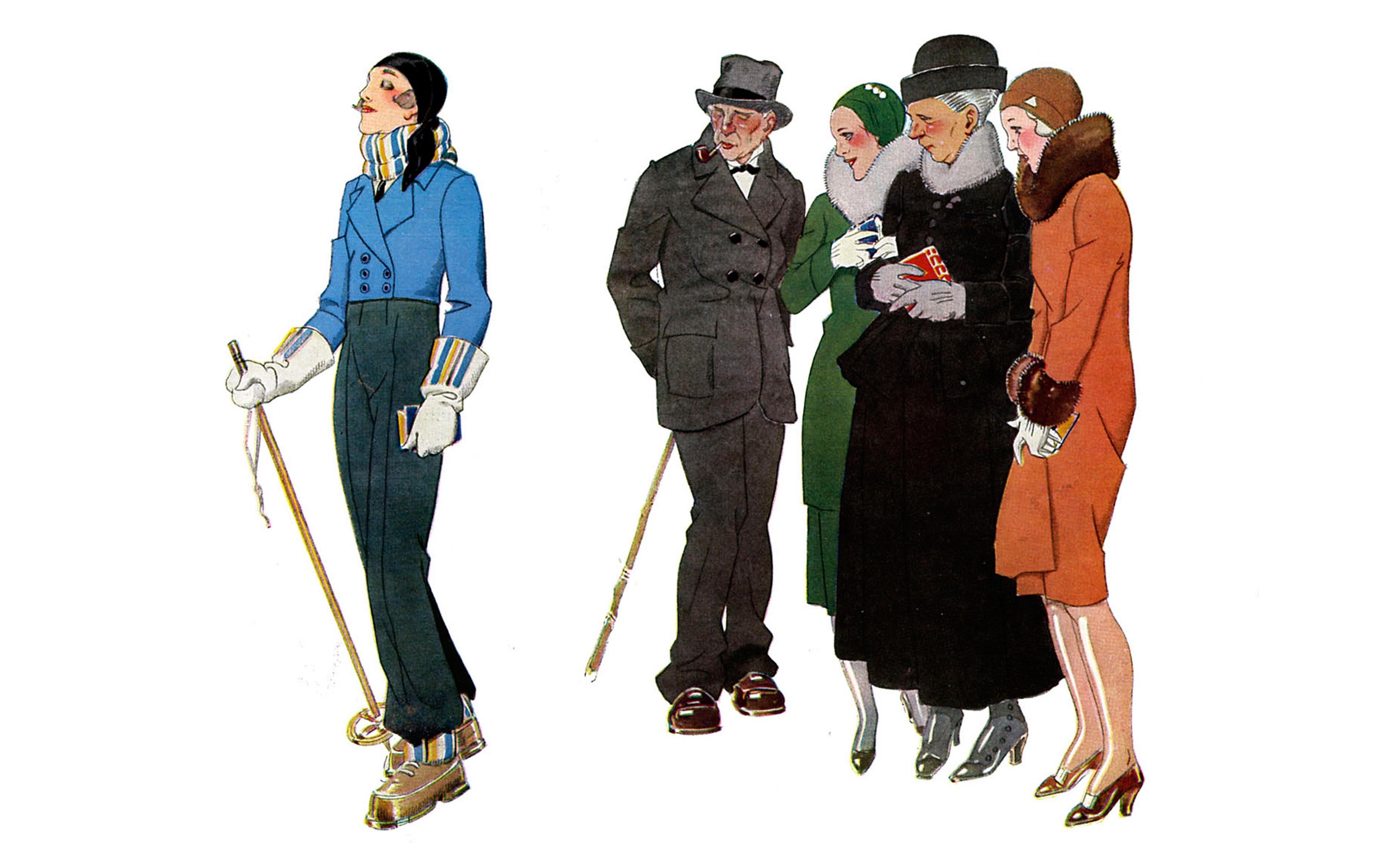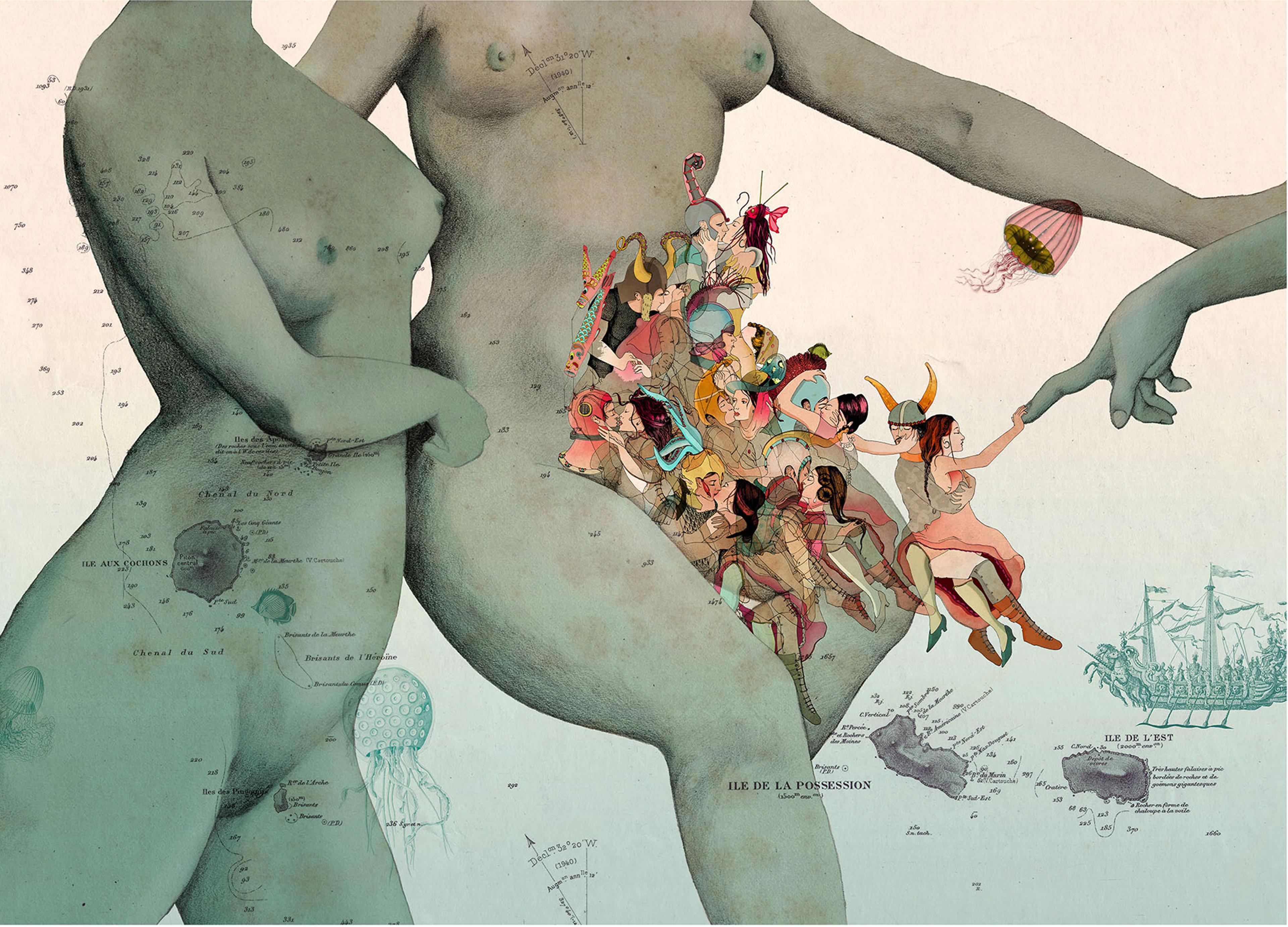Although academic philosophy divides itself into continental and analytic strands, it is not entirely clear how this division is meant to work. For one thing, it pits a continent against a method, which, as the late English philosopher Bernard Williams once pointed out, is like comparing a car made in Japan with a car that’s got four-wheel drive. Moreover, there are many analytic philosophers who are European, and many continental philosophers who are not, and there are many analytic philosophers who read certain continental philosophers such as Martin Heidegger and Jacques Derrida, and many continental philosophers who steer clear of both of them.
In fact, the designation of certain kinds of philosophy as continental is often just an insult: what is really meant is that the philosophy in question is obscure and rococo, and that whatever virtues it has to offer pale in comparison with the logical rigour and precision of the analytic approach. In turn, the retort from many continental philosophers is that logic and precision often mean simply omitting from one’s purview the messier swaths of human experience, those that cannot be reduced to the sort of formulas that analytic philosophers prize, such as x is y if, and only if, z.
This divide seems to reproduce itself within feminist philosophy. One volume pointedly calls itself the Bloomsbury Companion to Analytic Feminism (2018). The famed online Stanford Encyclopedia of Philosophy offers separate articles on analytic and continental feminism (although with a separate article on intersections between the two). The article on analytic feminism notes its commitment to careful argumentation and to ‘the literal, precise, and clear use of language’, while that on continental feminism notes its interest in unveiling precisely those ‘non-discursive deep-seated biases and blind spots … not easily detected by an exclusive focus on the examination of arguments’. The article on analytic feminism emphasises the importance of the philosophy of language, epistemology and logic; that on continental feminism the importance of postmodernism, psychoanalysis and phenomenology.
Yet both analytic and continental feminists are committed to the freedom and equality of women and to overcoming discrepancies in power and privilege in general. If we stress only their differences, we overlook the way they work along a common track. They might take their bearings from different literatures and employ different terminologies; they might also work in relative isolation from one another. Nevertheless, it is possible to understand their respective analyses as contributions to a joint discussion that, if it does not entirely resolve important issues, at least deepens our consideration of them. To see how, we can begin with a core feminist question: namely, who or what are women? Who are the subjects to whose freedom and equality feminist philosophers are committed?
As current debates over trans women and gender identity indicate, this question is more difficult to answer than it might initially appear. In the 1960s and ’70s, so-called second-wave feminists began to distinguish between sex and gender, where sex was meant to refer to biological features of bodies, and gender to the socially and culturally prescribed behaviours, roles, attitudes and desires that were meant to go along with these biological features. Feminists in both continental and analytic camps often used this distinction to argue against the idea that biology is destiny – that, for instance, women’s biological make-up means not only that they alone can bear children but also that they alone can and should raise them. For second-wave feminism, distinguishing between the role of male and female sexes in biological reproduction, and the role of masculine and feminine genders in dividing up domestic duties, seemed to provide the basis for freeing women to pursue their interests and opportunities on an equal basis with men. Yet for later feminists, references to sex and gender have served primarily to highlight differences between different groups of women, and to underscore the difficulty of defining women so as to include all those who ought to be included, and to exclude those who ought not.
Take sex. Suppose we were to say that only those people are women who possess two X chromosomes. Do we then want to exclude trans women? This question has arisen with some hostility recently, with some feminist philosophers arguing that trans women are women and, indeed, particularly vulnerable ones that all feminists ought to support. Others reply that to define trans women as women blurs distinctions that are important for, say, medical care, lesbian identity and issues of physical safety. Moreover, what about those born with one X and one Y chromosome who have androgen insensitivity syndrome (AIS) and have stereotypically female features because their bodies do not read testosterone? Or those born with two X chromosomes where maternal androgens give them stereotypically male features? If by the female sex we mean to refer to the biological features of females, which ones? Should we define people according to their chromosomes or according to their bodily features?
When we turn to gender and define women as those who conform to certain socially and culturally prescribed behaviours, roles, attitudes and desires, we run into similar quandaries. Women possess different races, ethnicities, sexualities, religions and nationalities, and they belong to different socioeconomic classes. Some are middle-class African-American women, and others are working-class white women; some are religious, and some are not. Such differences can give rise to different concerns and interests. To the extent that the differences prescribe different norms and roles, then emancipation from those norms and roles will be different. For example, if emancipation for upper- and middle-class white American women who were historically discouraged from working outside the home involves the freedom to take on paid work, for American working-class women and women of colour who historically needed to or were required to work outside the home, emancipation might involve precisely the freedom to care full-time for one’s own family.
What sex or gendered property or properties do females or women hold in common, then, that might be cordoned off and considered independently of their differences? How do we formulate an answer to the question of who women or females are that is definitive, inclusive and useful for moving forward on issues of women’s equality and freedom? Second-wave feminists were roundly criticised for claiming to speak for all women while focusing mostly on the issues and challenges confronting white, middle-class women, and neglecting those facing non-white, non-middle-class women. How then do contemporary feminist philosophers recognise differences between women while also providing the basis for collective feminist work?
If one is not subordinated – perhaps the Queen of England – then one is not a woman by this definition
Sally Haslanger, professor of philosophy and linguistics at the Massachusetts Institute of Technology, puts forth an influential analytic-feminist approach in a series of articles, and in her book Resisting Reality: Social Construction and Social Critique (2012), proposing what she calls an ‘ameliorative’ definition of women. Different projects might require different definitions. But if the feminist project is that of emancipating women and ensuring their equality or, as Haslanger puts it, overcoming sexist oppression, and correcting disparities in power and privilege, then she thinks that for these purposes we can look to hierarchical relations in which one group is subordinate to another, and in which the two groups are differentiated by presumed differences in sex. On this formulation, S is a woman if and only if:
S is systematically subordinated along some dimension (economic, legal, political, social, etc) and S is ‘marked’ as a target for this treatment by observed or imagined bodily features presumed to be evidence of a female’s biological role in reproduction.
To be a woman is to be subordinated in some way because of real or imagined biological features that are meant to indicate one’s female role in reproduction. The definition is inclusive enough to include not only cis women but also both AIS women and trans women, at least those who have undergone sufficient bodily transformations so that their visible bodies would seem to be evidence for a female role in biological reproduction. The definition can also include both those subordinated and oppressed by being discouraged from working outside the home, and those subordinated and oppressed by needing or being required to do so. Of course, if one is not subordinated at all or at least not because of presumptions about one’s biological role – perhaps the Queen of England – then one is not a woman according to this definition.
Given the ameliorative goal of providing a definition of women geared to the task of overcoming sexist oppression, Haslanger is not overly concerned with such omissions. Other analytic feminists are less sure. Mari Mikkola, associate professor of philosophy at the University of Oxford, claims that use of Haslanger’s terms would simply create confusion by excluding many people commonly defined as women (such as the Queen of England). Katharine Jenkins, assistant professor of philosophy at the University of Nottingham, notes that if the definition is capacious enough to include trans women whose visible bodies evoke presumptions about a female role in biological reproduction, it nevertheless excludes those trans women whose bodies do not (and thus leaves important issues unresolved). Finally, Jennifer Saul, professor of philosophy at the University of Sheffield, wonders whether individuals who want to become women necessarily understand themselves as wanting to become subordinated.
Such objections suggest that the task of delineating an analytically precise and appropriately inclusive definition of women will be an arduous one, with some people messily slipping out of the confines of strict definitions even though they might well be among those on whose behalf feminism should be struggling.
If we turn now to the continental tradition in feminist philosophy, at least some of its representatives suggest that attempts to clarify who or what women are simply come too late in the game. Rather than trying for an exhaustive definition, we should first ask how women come to be. This question goes back to the French feminist Simone de Beauvoir, who in her book The Second Sex (1949) asserts: ‘One is not born, but rather becomes a woman.’ But who is the ‘one’ here? Who is doing the becoming?
De Beauvoir’s claim seems to envisage a biologically female-sexed child who learns through socialisation to assume the attitudes, behaviours and desires of a femininely gendered woman. The issues of what makes for the female sex and what makes for the feminine gender are knotty enough – de Beauvoir has been accused of assuming all women are mid-century, middle-class Parisians. Yet some continental feminists think that if there is a distinction to be made between sex and gender at all, it is misleading to think that we begin with a sex and acquire a gender. Bodies do not come presorted by chromosomes or genitalia alone; we could sort them by belly-button type, after all. Their sorting by sex, then, reflects human purposes and interests – those having to do with human procreation. Although these might be crucial human purposes and interests, they are still human ones. To this extent, the primary division of populations into males and females, like the socialisation that creates men and women, is a human ‘construction’.
In her classic text Gender Trouble: Feminism and the Subversion of Identity (1990), Judith Butler, professor of comparative literature at the University of California, Berkeley, goes further. While de Beauvoir suggests that gender is a result of socialisation, Butler sees it as the imposition of a set of behavioural and attitudinal norms. She suggests that, as such, it is an effect of power. Likewise, because what sorts human populations by sex is the necessity of human procreation, at the root here is what she calls, following the late American feminist Adrienne Rich, compulsory heterosexuality – or again, power. As it turns out, then, both sex and gender are effects of power. Rather than beginning with a sexed person who acquires a gender and develops appropriate desires for the other sex/gender, the analysis must begin with the requirements of heterosexual desire that demand an opposition between masculine and feminine genders, and see these as modes of behaviour of male and female sexes.
If we accept this conclusion, we need to reconsider the assumption behind the feminist commitment to the freedom and equality of women. This assumption supposes that the challenge of emancipation is that of overcoming oppression from external relations of power and subordination. But if we follow Butler and some other continental feminists, the challenge turns out to be that women are themselves effects of power, so that emancipation from relations of power and subordination requires emancipation from being women. The question then becomes less how to further the freedom and equality of women, and more: what do feminist struggles look like if the subject for whose freedom and equality they struggle is already a product of subjugation?
Butler answers this sort of question by replacing emancipation with what she calls ‘resignification’, a process of taking up the effects of power and redeploying them. Although women are effects of power, this power is never accomplished once and for all but must be perpetually reinforced and, moreover, we reinforce it in the ways we act as gendered beings. In behaving as men and women are meant to behave – moving and speaking in gendered ways, desiring those we are meant to desire, performing gendered roles in gendered ways, and in modelling these ways of behaving for our children – we continually recreate gender and do so as if it were a natural expression of sex.
Drag performances offer new possibilities in gender, but what about their more restrictive resignifications?
But we can also behave in ways that undermine this supposed naturalness. We can poke fun at our gendered ways of acting and we can act differently. Drag performances, for example, can camp up stereotypical feminine modes of behaviours and by doing so demonstrate their performance elements. Intentionally playful and ironic butch-femme relations can undermine and redirect conventional conceptions of how genders should relate. Both serve to parody a strict male/female binary, and muddle standard equations of sex, gender and desire.
Yet, just as many analytic feminists wonder about Haslanger’s analysis, many continental feminists wonder about Butler’s. Seyla Benhabib, professor of political science and philosophy at Yale University, questions the recourse to resignification by asking how far we need to imbed power into identity. Infants might be born into a world of existing gendered relations, hierarchies and distributions of power, and they might be socialised into this world by parents, teachers and others. Nevertheless, to say that they are born and socialised into these relations is not to say that they are already entirely constituted by them. Individuals are still capable of the sort of agency that is not itself power but rather overcomes it. For her part, Nancy Fraser, professor of political and social science at the New School in New York, asks why we should assume that resignification is always good. While drag performances and butch-femme relations might point to attractive new possibilities in gender and gender relations, what about resignifications that move them in more restrictive directions? If the camp in a gay pride parade works to try to undermine conventional ideas about a gender binary, what about the resignifications in alt-Right demonstrations against gender and racial equality? What about the subversion of norms of civic behaviour and civil discourse?
It also remains unclear how far resignification can take us in a more straightforwardly political way. In the years since the 1990s, gender categories have become increasingly fluid and flexible, and in the United States sexual norms have loosened considerably. According to a 2017 article in Time magazine, 20 per cent of millennials say they are something other than strictly straight and cisgender. Facebook has about 60 options for a user’s gender, and the dating app Tinder has about 40. Yet a widespread gender binary still generally structures people’s circumstances and prospects.
Even if we agree that this binary is socially constructed, to say that gender and possibly sex are effects of power is not to say that people do not live as men and women, any more than saying that witches don’t exist means that no one was ever put to death for being one. However we conceive of women – as constructed by or born into relations of power – and however we resolve questions of inclusion and exclusion, it is clear that, broadly speaking, they are worse off than men. According to Legal Momentum, the Women’s Legal Defense and Education Fund in the US, women are 35 per cent more likely than men to be poor. Likewise, the Institute for Women’s Policy Research reports that, in 2017, women in the US earned on average 80.5 cents for every dollar that white men earned. Broken down by race and ethnicity, Latinas earned on average 53 cents; African-American women 60.8 cents; and the data from years before 2017 show that Native-American women earned on average 57 cents. According to the National Women’s Law Center, women comprise two-thirds of minimum-wage earners in the US, a wage that has remained at $7.25 an hour since 2009, and has lost about 9.6 per cent of its purchasing power through inflation.
Yet we need to pit struggles for greater freedom in gender identities and relations against struggles for greater equality in material conditions. Tithi Bhattacharya, professor of South Asian history at Purdue University in Indiana, suggests as much in her recent Guardian article on the teachers’ strikes in the US. Fighting for higher wages, these strikes are also bound up with gendered identities. In public schools in the US, 77 per cent of teachers are identified as women, a feminisation of the profession that Bhattacharya says began in 1900 and might have started because teachers’ salaries began to decline as the school year lengthened. But with feminisation came a ‘deskilling’ of teaching as less a profession than a continuation of stereotypically female care work. Teaching along with nursing and childcare can be paid poorly because the care work it exemplifies is supposed to be something that women do naturally, from birth. The same presumably holds for housekeeping and similar minimum-wage jobs that keep many in poverty. In short, conventional ideas of the innate biological capacities belonging to women and men remain structurally embedded in significant institutions and practices.
To the extent that resignification helps to undermine such presumptions by unsettling our conceptions of sex and gender, it can be part of the solution to gendered economic disparities as well. This intervention can reflect a more modest form of resignification than what some feminists have in mind: what is at stake is less parodying and undermining the male/female binary than overcoming its more pernicious presumptions about people. Nevertheless, to the extent that doing so denaturalises care work and similar equations of gender and ability, such resignification can also help to effect the structural changes needed to improve the conditions of the poorest and most marginalised, both in the US and globally.






